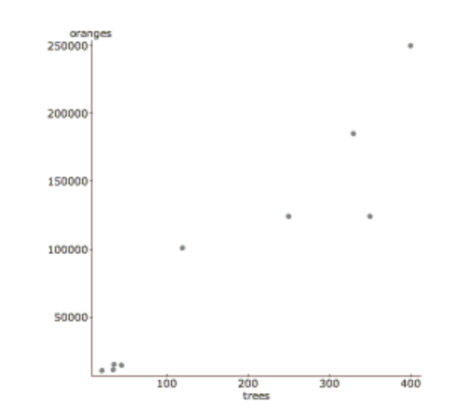Essay
A study examined the number of trees in a variety of orange groves and the corresponding number of oranges that each
grove produces in a given harvest year. Linear regression was calculated and the results are below.
linear regression results:
Dependent Variable: oranges
Independent Variable: trees
Sample size: 9
R-sq = 0.886
s = 31394.7
- 
Since is not 100%, there must be other factors in influencing the number of oranges harvested. What percentage is that and what is another factor you think might be involved?
Correct Answer:

Verified
11.4% of the variation is due ...View Answer
Unlock this answer now
Get Access to more Verified Answers free of charge
Correct Answer:
Verified
View Answer
Unlock this answer now
Get Access to more Verified Answers free of charge
Q5: Interpret the intercept of your model in
Q98: Match each graph with the appropriate correlation
Q99: Two variables that are actually not related
Q100: Personal debt According to The World
Q101: Using the equation in number #8 again,
Q102: A regression analysis of students' college grade
Q104: Email At CPU every student gets a
Q105: The model <span class="ql-formula" data-value="
Q107: <b>High Score</b> The longer you play
Q108: A business owner notes that for every